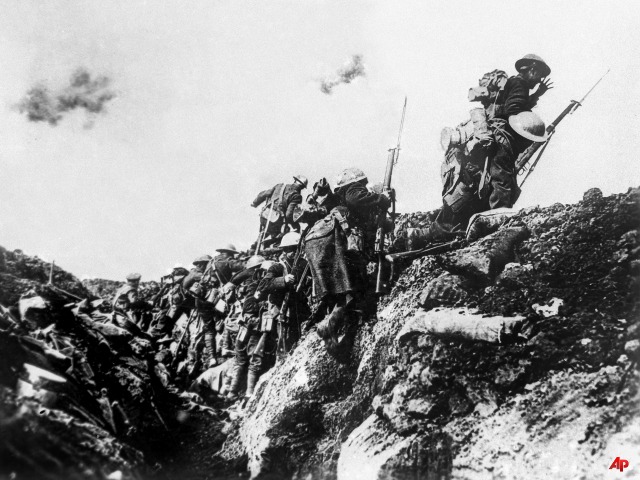Editor’s Note: 100 years ago today, the bloody 20th century started with an assassination. The New York Times has given over much of today’s edition to coverage. We reprint here some of the highlights.

From “The War to End All Wars? Hardly. But It Did Change Them Forever,” by Steven Erlanger:
To walk the orderly rows of headstones in the elegant graveyards that hold the dead of World War I is to feel both awe and distance. With the death of the last veterans, World War I, which began 100 years ago, has moved from memory to history. But its resonance has not faded — on land and geography, people and nations, and on the causes and consequences of modern war.
The memorial here at Tyne Cot, near Ypres and the muddy killing ground of Passchendaele, is the largest British Commonwealth cemetery in the world. Nearly 12,000 soldiers are buried here — some 8,400 of them identified only as “A Soldier of the Great War, Known Unto God.” Despite the immensity of this space, the soldiers represent only a tiny portion of the 8.5 million or more from both sides who died, and that number a fraction of the 20 million who were severely wounded.
In Europe’s first total war, called the Great War until the second one came along, seven million civilians also died.
Yet the establishment of these grave sites and monuments, here and in villages all over the Western Front, is more than a reminder of the scale of the killing. World War I also began a tradition of memorializing ordinary soldiers by name and burying them alongside their officers, a posthumous recognition of the individual after the trauma of mass slaughter.
World War I could be said to have begun in Sarajevo on June 28, 1914, with the assassination of Archduke Franz Ferdinand and his wife, Sophie, by a young nationalist seeking a greater Serbia. The four and a half years that followed, as the war spread throughout Europe, the Middle East and Asia, reshaped the modern world in fundamental ways.
The war destroyed kings, kaisers, czars and sultans; it demolished empires; it introduced chemical weapons, tanks and airborne bombing; it brought millions of women into the work force, hastening their legal right to vote. It gave independence to nations like Ukraine, Poland and the Baltic countries and created new nations in the Middle East with often arbitrary borders; it brought about major cultural changes, including a new understanding of the psychology of war, of “shell shock” and post-traumatic stress.
It also featured the initial step of the United States as a global power. President Woodrow Wilson ultimately failed in his ambitions for a new world order and a credible League of Nations, setting off much chaos with his insistence on an armistice and his support for undefined “self-determination.” And the rapid retreat of the United States from Europe helped sow the ground for World War II.
Read the rest of the story at the New York Times.

COMMENTS
Please let us know if you're having issues with commenting.